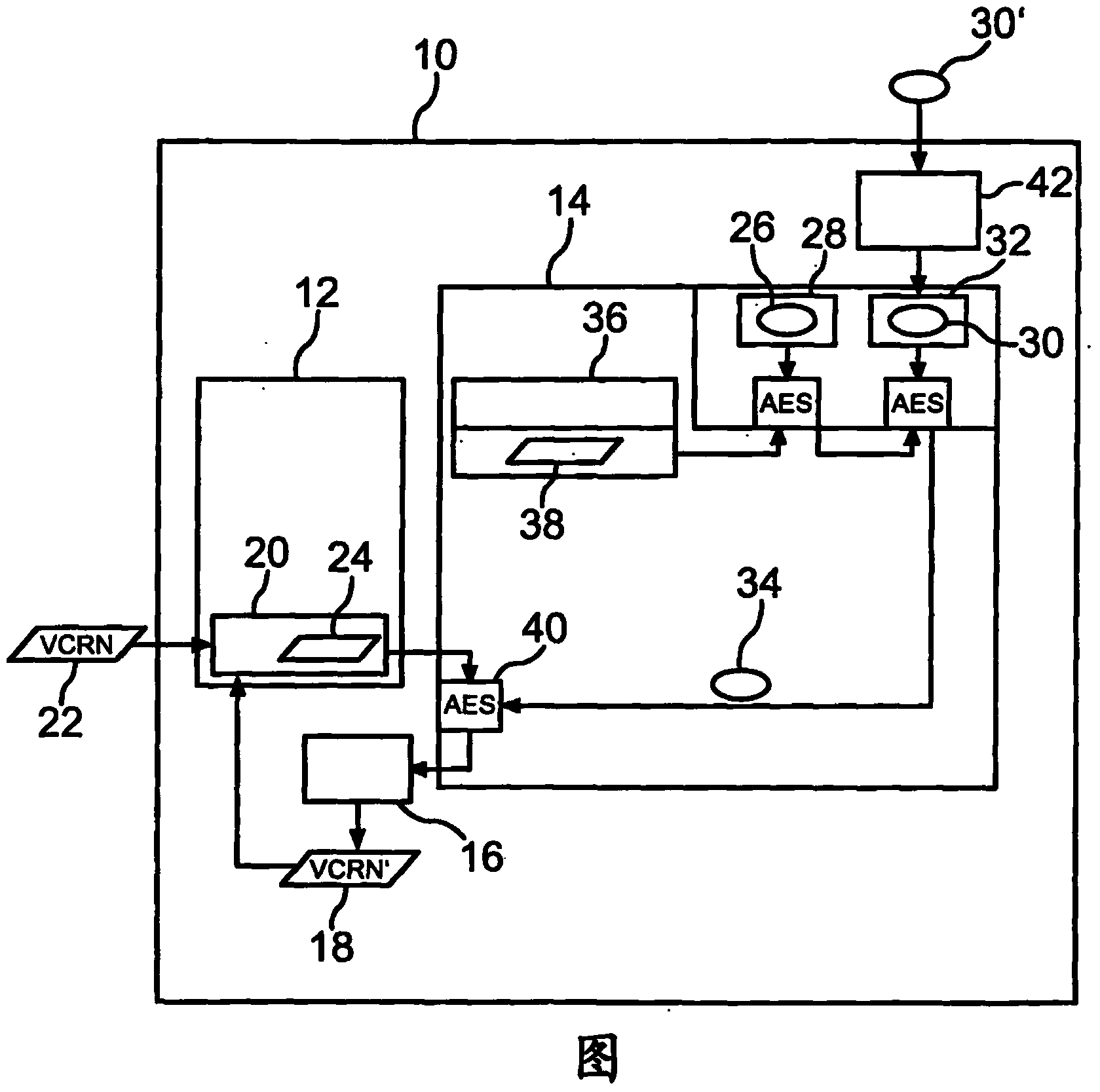Motor vehicle control unit having a cryptographic device
A technology of control equipment and cryptographic devices, which is applied in the direction of secure communication devices, computer security devices, and the usage of multiple keys/algorithms, and can solve problems such as unusable control equipment and threats to the safety of motor vehicle users.
- Summary
- Abstract
- Description
- Claims
- Application Information
AI Technical Summary
Problems solved by technology
Method used
Image
Examples
Embodiment Construction
[0021] The drawing shows a control unit 10 which is installed in a passenger vehicle (not shown in detail). In relation to the exemplary embodiment on which the figures are based, it is assumed that the control device is the navigation device of the passenger car. However, it can also generally be a control device that provides any other functionality than navigation assistance functions.
[0022] The route calculation required for the navigation assistance function and the driving instructions generated by the digital indicator of the navigation device (not shown) are controlled by the control device 12 . The control device 12 is coupled to an encryption device 14 of the control device 10 . The output of encryption device 14 may be transmitted to compression device 16 . The output value 18 of the compression device 16 can be transmitted to the control device 12 .
[0023] The control device 12 , the encryption device 14 and the compression device 16 can each be a circuit a...
PUM
 Login to View More
Login to View More Abstract
Description
Claims
Application Information
 Login to View More
Login to View More - R&D
- Intellectual Property
- Life Sciences
- Materials
- Tech Scout
- Unparalleled Data Quality
- Higher Quality Content
- 60% Fewer Hallucinations
Browse by: Latest US Patents, China's latest patents, Technical Efficacy Thesaurus, Application Domain, Technology Topic, Popular Technical Reports.
© 2025 PatSnap. All rights reserved.Legal|Privacy policy|Modern Slavery Act Transparency Statement|Sitemap|About US| Contact US: help@patsnap.com

